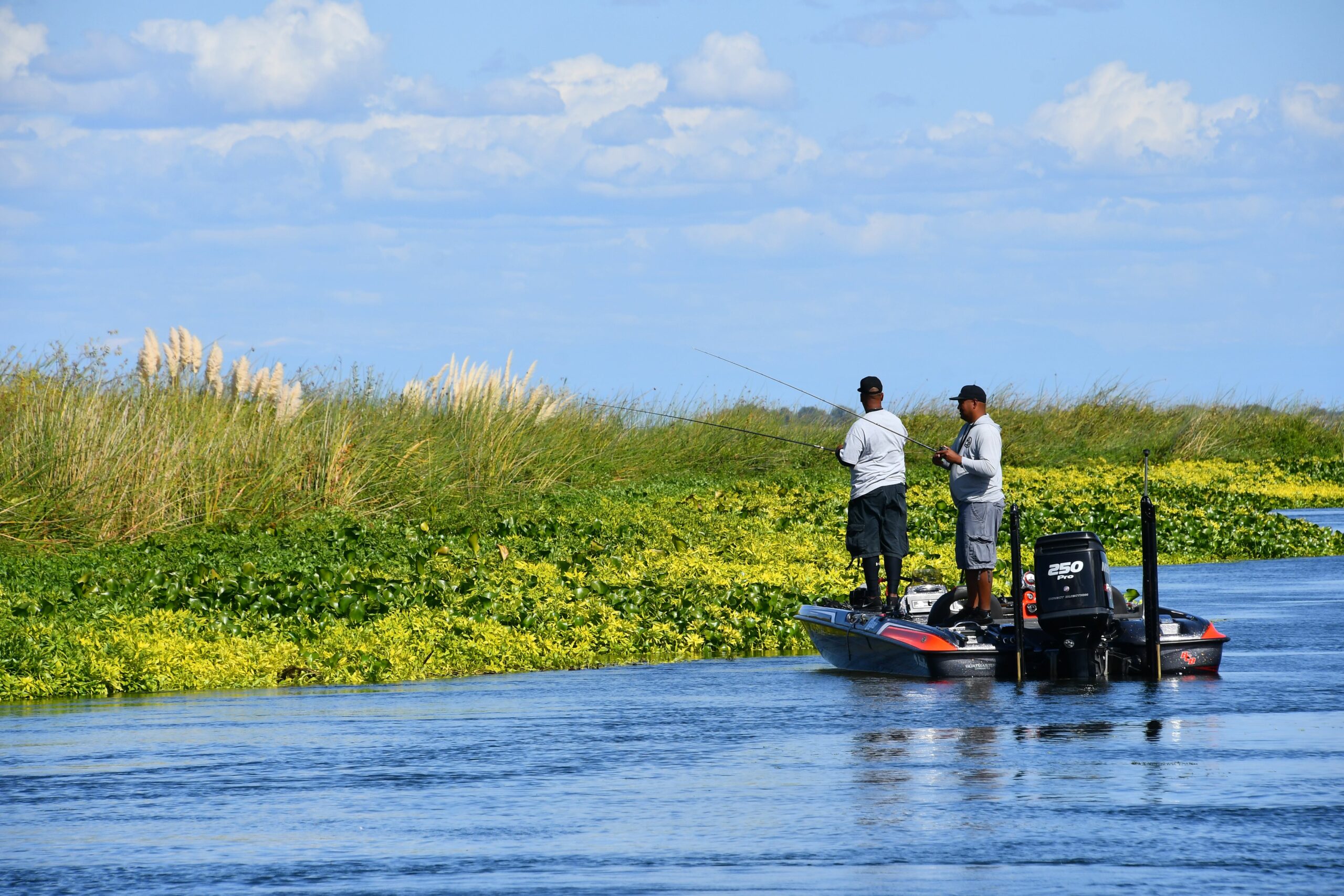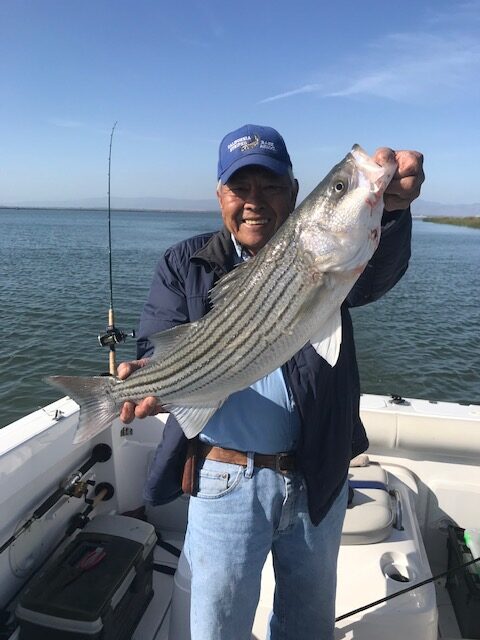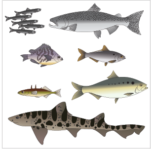
As the weekend dawns and California slumbers, the sportfishers descend, like clockwork, on the banks and waves of the San Francisco Bay and Sacramento-San Joaquin Delta.
They carry nets for herring or poles for sturgeon, heavy and light tackle, bloodworms or anchovy or any number of delectable morsels to attract the desired target. They tread industrialized East Bay shorelines and marshy Delta banks, hop aboard sporty six-pack boats for more ambitious trips or humbler craft for a leisurely solo excursion. They catch (and often release) a smorgasbord of species: halibut, kingfish (white croaker), or sturgeon around the Bay, or striped bass, salmon, and black bass in the many tendrils of the Delta.
“Here, you get both worlds, fresh and salt,” explains Hamilton Lai, a lifelong fishing enthusiast who has trolled the Bay and Delta for nearly 40 years.
Like many people who fish for pleasure, Lai recalls a time when fish were so abundant in the Bay that he’d catch his daily limit within 15 minutes. Today, “you’re lucky to catch your limit at all,” he says. Lai, a San Franciscan who grew up in Vietnam, “is a foodie of the practical kind, who arrives at a barbecue with a sack of oysters, not half a dozen,” according to Estuary‘s editor, a family friend.
Fishers like Lai have been on the quiet frontlines of witnessing transformations to the region’s fisheries since the late 20th century. Jim Cox, a retired charter-boat captain with four decades of experience fishing in the Delta, says that, “Nowadays when you do get a fish on, you’re accomplishing something extremely more difficult than it was 30 or 40 years ago.”
For many popular species, like striped bass, the data bear this out. Cox rattles off fishing factoids for the Bay and Delta the way sports buffs recall the stats about famous players and games. “The saltwater species have done pretty well,” Cox adds. He has a deep, frank captain’s voice that I can easily imagine carrying across the calm Delta waters. “But in the Delta itself, the fisheries have really declined.”
Changes to fisheries aren’t always straightforward paths of decline. Take the story of the perennially popular striped bass. It’s one of the most popular sportfish in the Delta, and, like many species, has suffered since the Delta’s water began to flow across the state to irrigate orchards half a century ago. A further 50 years back would land us in the era of a commercial fishery for “stripers.” But 50 years prior to that — in the 1870s — the species did not exist in California. It was introduced from Alabama in 1879 by men hoping the species would take to the ecosystem and provide sporting opportunities. What so many Delta residents now consider a beloved sportfish could be rightly viewed as an invasive species.
The rise and fall of striped bass is far from the only change to recreational fishing here in the last century and a half. Apps have replaced almanacs for checking the tides. The continuing drain of freshwater from the Delta to croplands, fruit trees, and cities hundreds of miles south is taking a toll on salmon and stripers alike. Legacy and emerging contaminants are accumulating in the flesh of various species in the Estuary, rendering some near-inedible. The specter of overfishing certain species lingers. These changes make it perhaps all the more impressive that sportfishing has remained as a regional pastime over the decades that have rendered everything from transportation to entertainment to communication unrecognizable.
At its core, fishing for pleasure seems almost unchanged, a pocket of life in the slow lane that has resisted the speeding-up of modern times. Cox offered an example of an acquaintance who hopes he doesn’t catch anything when he goes fishing: “He just wants to be out there and left alone.”
In a 1960 California Department of Fish and Game booklet called Inshore Fishes of California, one of the authors describes “one of the most contented persons [he] ever met” as an angler with a similar philosophy on fishing: ‘It really doesn’t matter if I catch anything. I enjoy the relaxation and peace of mind I get on my fishing trips.’”

Still, the enduring spirit of fishers in the Bay and Delta does not bely the seriousness of the declining populations of many sportfish species. As the few seasoned sportfishers who recall the Bay and Delta of the mid-1900s grey and fade away, the reality they remember will fade as well. There’s data, of course, but it sometimes serves as a poor counterweight to lived experience and memory.
Roger Mammon has a hefty dose of both. A founding member of advocacy group Restore the Delta and president of the West Delta Chapter of the California Striped Bass Association, he has fished throughout the region for more than 70 years. “I get on social media and I see these people posting about catching fish and how great things are,” says Mammon. “They just don’t know what it used to be.”
Top photo: Fishing in Franks Tract in the Delta. Photo: Brett Milligan
Previous Estuary Stories
LINKS
